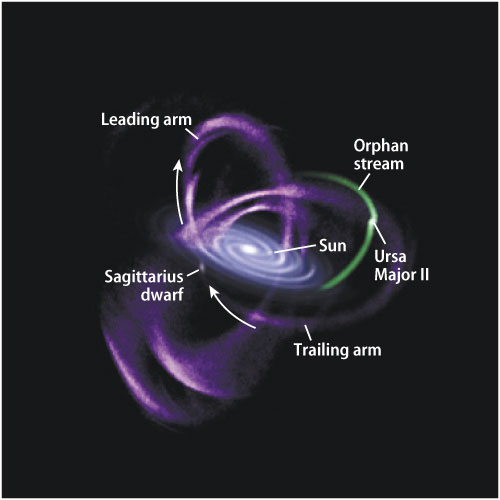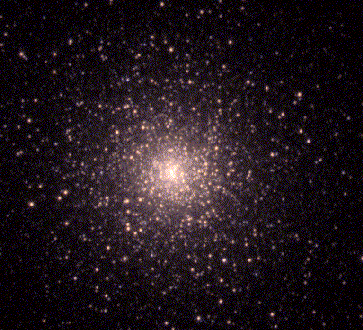 Globular Clusters:
Globular Clusters: Globular Clusters:
Globular Clusters:
Originally it was thought that all globular
clusters were part of the halo. Now, however, it is realized
that two distinct populations of globulars exist. Old,
metal-poor clusters ([Fe/H] < -0.8) are part of an extended,
spherical halo, while (slightly) younger clusters with [Fe/H] > -0.8 are
in a more concentrated and flattened distribution.
The less-metal-poor clusters have a scale height similar to that
of the thick disk, and they may be associated. Other ideas have
them related to the Galaxy's bulge instead...
Globular clusters are generally old, with ages ranging from 9-12 billion years. However, there's still a lot of uncertainty about absolute ages here...
How do we find field halo stars? Look at the space velocities of stars with respect to the Sun. If they are low, they are probably disk stars (like the Sun). If they are high, they are usually associated with the halo.If we add up all the mass in the field stars and the metal-poor GCs, we can come up with a rough density distribution for the Galaxy's stellar halo:Like the GCs, the halo field stars are also metal-poor. This tells us something about the formation of the Galaxy!
The total mass of the halo is about 108
- 109 M sun, about 1% of which is the
globular clusters, and the rest in field stars. So there's not a
lot of stuff in the stellar halo, but what is there holds a lot
of information about the early history of the Galaxy!
| The metallicity distribution of
field stars in the Milky Way's halo shows lots of very
metal poor stars, with an long tail to extremely metal
poor values of [Fe/H] < -3.5. (Figure taken
from Prantzos
2008) Spectra of extreme metal-poor stars (solar, -4, -5.3, zero metals), courtesy ESO: 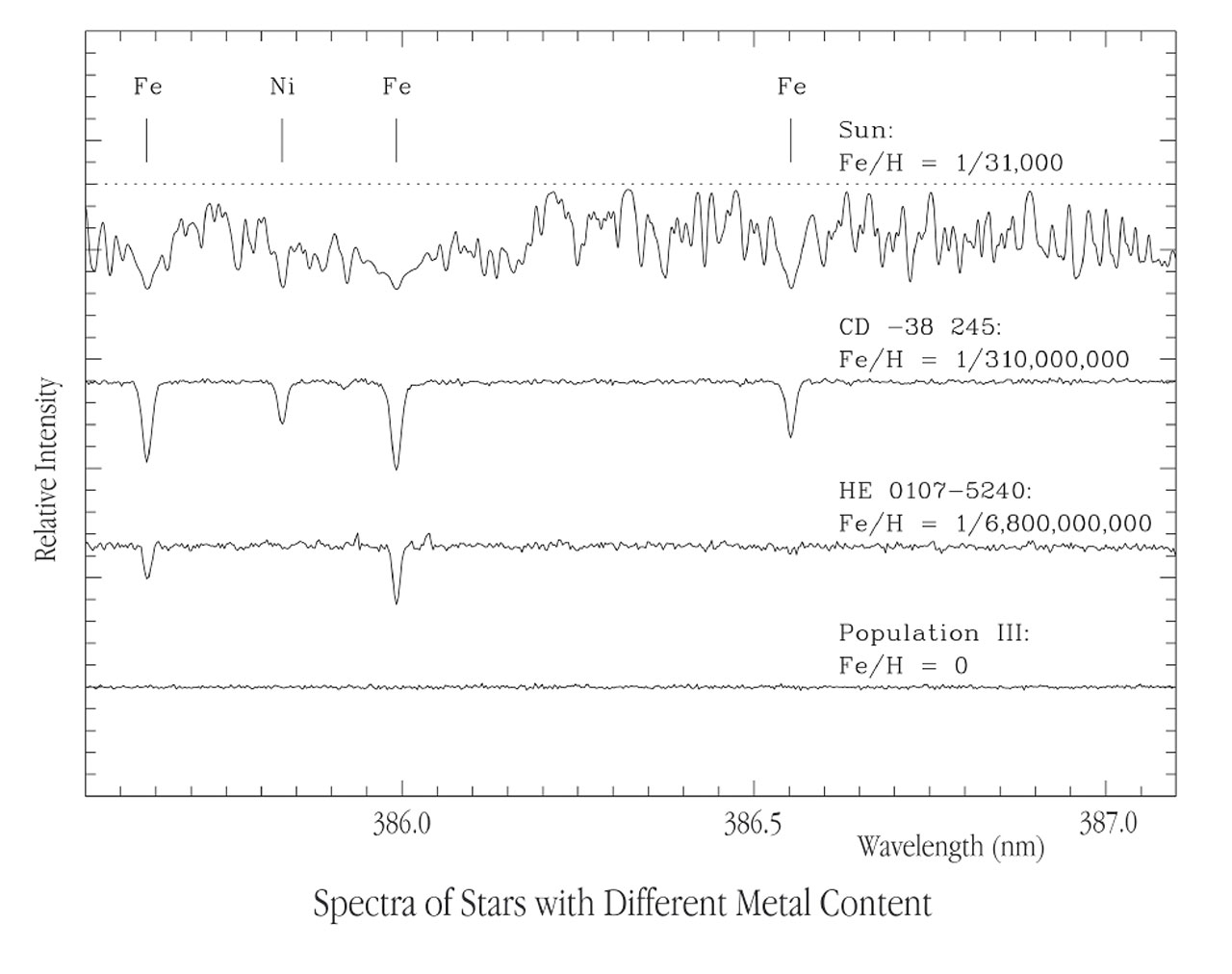 Stars this chemically unenriched must trace the early history of star formation in the Galaxy! |
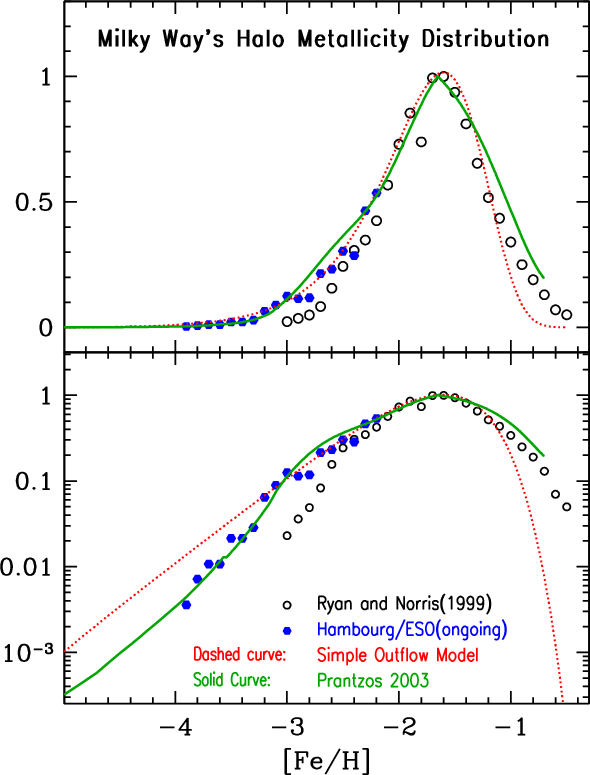 |
The distribution of stars in the Milky Way's halo is
not smooth, but shows evidence for stellar streams.
Below: A plot showing the distribution of halo stars on the sky. In this plot, color is not the color of
the star, but distance (blue nearer, red further).
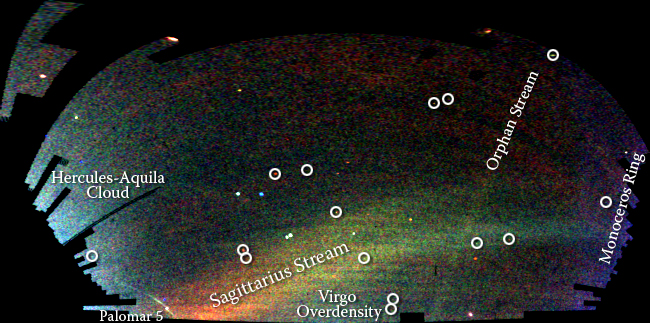
On larger scales, these streams can be overlaid on other
measurements of structure in the galactic halo, showing how
the big SDSS stream continues around the whole galaxy:

We see similar streams around the nearby Andromeda Galaxy: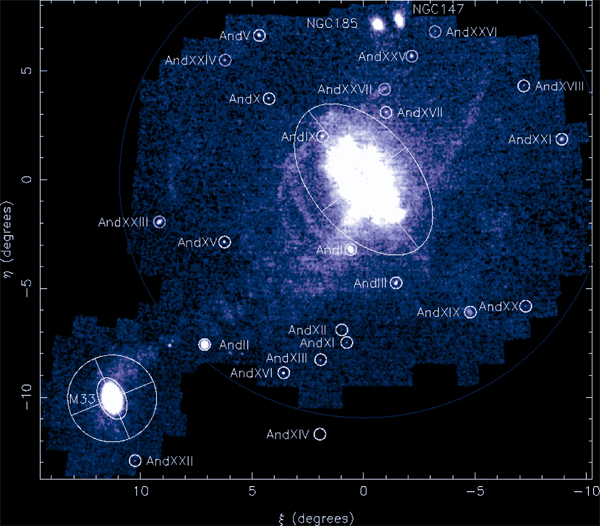
(Geraint Lewis, U Sydney)
|
And around other galaxies: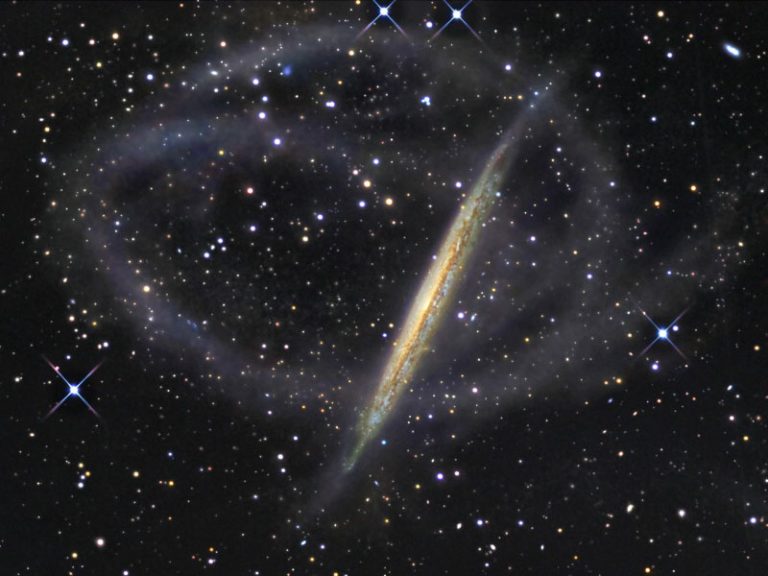 (David Martinez-Delgado)
|
